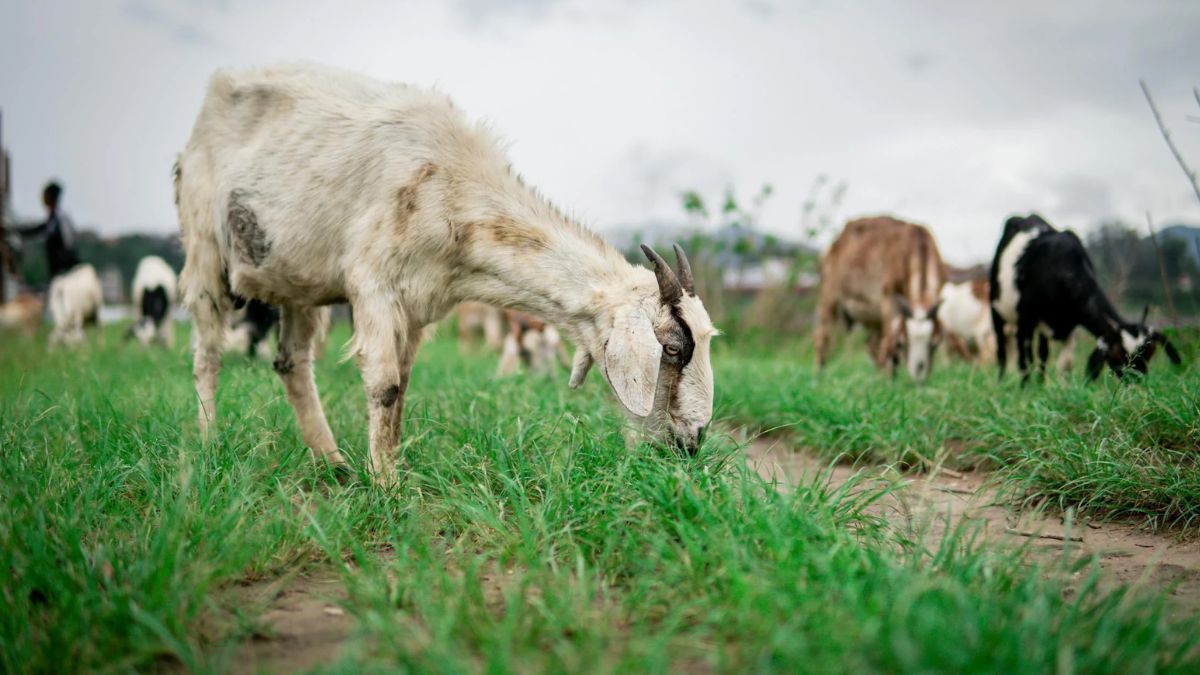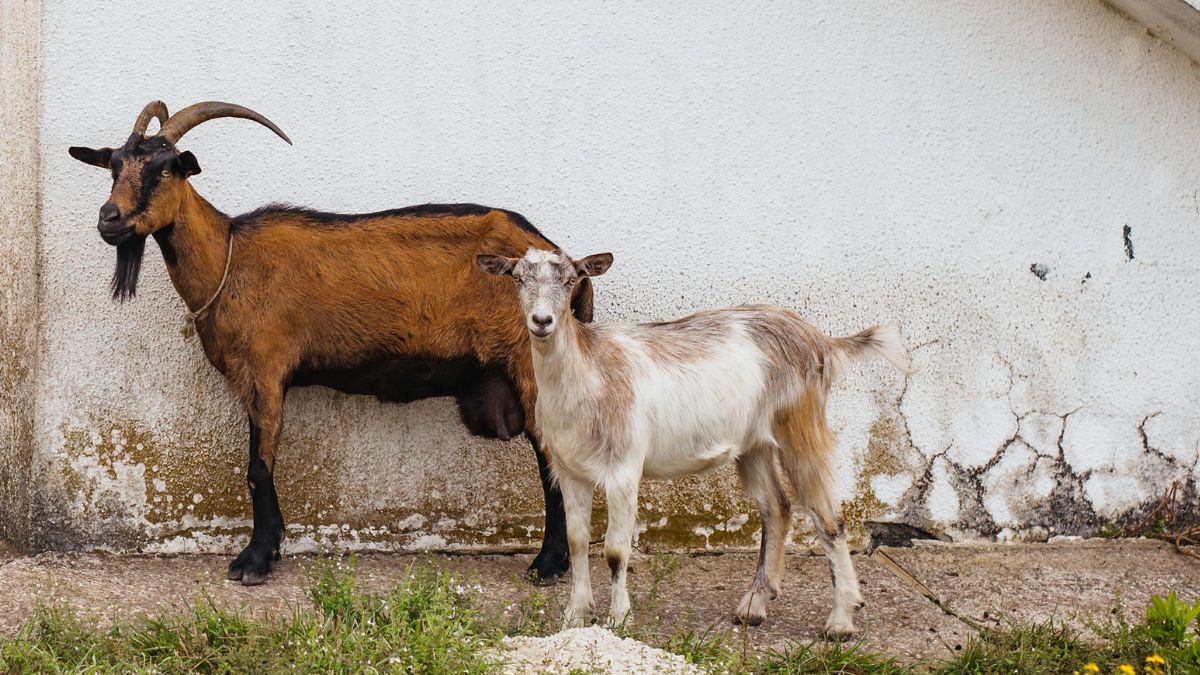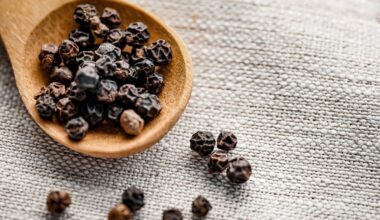Goats, often seen as barnyard companions or lawnmowers on four legs, hold a rich history and possess surprising capabilities. These seemingly simple creatures boast a fascinating array of features and behaviors. Delve into this article to discover ten incredible facts about goats that will change the way you see these charming animals.
1: From Wild Ancestors to Domesticated Companions
Goats were one of the first animals to be domesticated, with evidence suggesting human-goat relationships dating back over 9,000 years. Their wild ancestors, the Bezoar ibex and the Markhor, are native to the mountainous regions of Central Asia and the Middle East. Domesticated goats spread across the globe, becoming a vital source of milk, meat, fiber, and companionship for various cultures.
2: Masters of the Mountains
Goats are renowned for their incredible climbing abilities. Their strong, flexible legs with cloven hooves provide exceptional grip on rocky terrain. These surefooted creatures can navigate steep slopes with ease, a skill inherited from their wild mountain goat ancestors. This adaptation allows them to access food sources in harsh environments and avoid predators.

3: Browsers, Not Grazers
Unlike cows or sheep, goats are classified as browsers, not grazers. This means they prefer to eat leaves, shrubs, and woody plants over grass. Their sensitive upper lips help them to meticulously select their food, ensuring they consume a variety of nutritious plants. This selective eating habit can actually benefit the environment, as goats can help control brush and prevent wildfires.
4: More Than Just Stubborn
Goats often get a reputation for being stubborn, but this perception underestimates their intelligence. Studies have shown that goats are capable of learning complex tasks, solving puzzles, and even recognizing human emotions. Their curious nature and playful personalities demonstrate their cognitive abilities. Next time you interact with a goat, observe their problem-solving skills as they navigate obstacles or figure out how to reach a desired treat.
5: Social Butterflies
Goats are highly social animals and thrive in herds. They communicate through a variety of vocalizations, including bleats, moos, and even screams. These vocalizations express a range of emotions, from contentment to fear. Within a herd, goats establish social hierarchies and form strong bonds with specific individuals. They rely on each other for companionship, protection, and grooming.
6: Playful Personalities and Inquisitive Minds
Goats are surprisingly playful creatures. Young goats, often called kids, engage in playful behavior like jumping, chasing, and sparring with their horns (which are present in both males and females). This playful behavior helps them develop social skills and refine their physical abilities. Adult goats also exhibit curiosity and inquisitiveness, readily exploring their surroundings and investigating new objects.

7: Beyond the Barnyard
There are over 200 recognized goat breeds worldwide, each with unique characteristics and purposes. Popular breeds include:
Mountain Goat: Known for their impressive climbing abilities and adaptations to harsh mountain environments.
Fainting Goat: A breed known for a fainting response triggered by stress or sudden noises. While dramatic, this fainting is temporary and harmless.
Angora Goat: Prized for their long, silky mohair fleece, used to produce luxurious textiles.
Cashmere Goat: Known for their soft, downy undercoat, used to make the highly prized cashmere wool.
Pygmy Goat: A miniature breed popular as pets and for weed control due to their manageable size.
8: More Than Just a Fuzzy Face
The characteristic beard, more prominent in male goats, is not just for show. It plays a role in communication and social interactions. The beard houses scent glands that goats use to mark their territory and identify other individuals. Additionally, some goat breeds have wattles, fleshy pendulous growths on their necks. The function of wattles is not fully understood, but they may be related to dominance or sexual selection.
9: A Short Gestation Period
The gestation period for a goat is relatively short, typically around 5 months. This allows them to reproduce more frequently than many other large mammals. Goats typically give birth to twins, although triplets or even quadruplets are not uncommon. Baby goats, called kids, are precocial, meaning they are well-developed and can stand and walk within minutes of birth. This allows them to stay close to their mothers and avoid predators. Kids are weaned around 3-4 months old and reach sexual maturity by about 8 months.

10: More Than Just Milk and Meat
Goats have played a significant role in human societies for millennia. They provide a variety of resources, including:
Milk: Goat milk is a nutritious source of protein, fat, and essential vitamins. It is often easier to digest than cow’s milk for those with lactose intolerance.
Meat: Goat meat is a lean and healthy source of protein, consumed in many cultures worldwide.
Fiber: The hair or fleece of certain goat breeds, like Angora and Cashmere, is used to produce luxurious textiles like mohair and cashmere wool.
Leather: Goat leather is prized for its strength, durability, and smooth finish. It is used in various products, such as gloves, wallets, and shoes.
Brush Control: Goats can be used for natural weed and brush control in pastures and other areas. Their selective eating habits make them effective in managing unwanted vegetation.
A Newfound Appreciation for the Humble Goat
Goats are more than just barnyard animals. They are intelligent, social, and surprisingly versatile creatures with a rich history alongside humans. From their impressive climbing abilities to their playful personalities, goats offer a glimpse into the fascinating world of these remarkable animals. The next time you encounter a goat, take a moment to appreciate their unique characteristics and the valuable contributions they make to our world.










